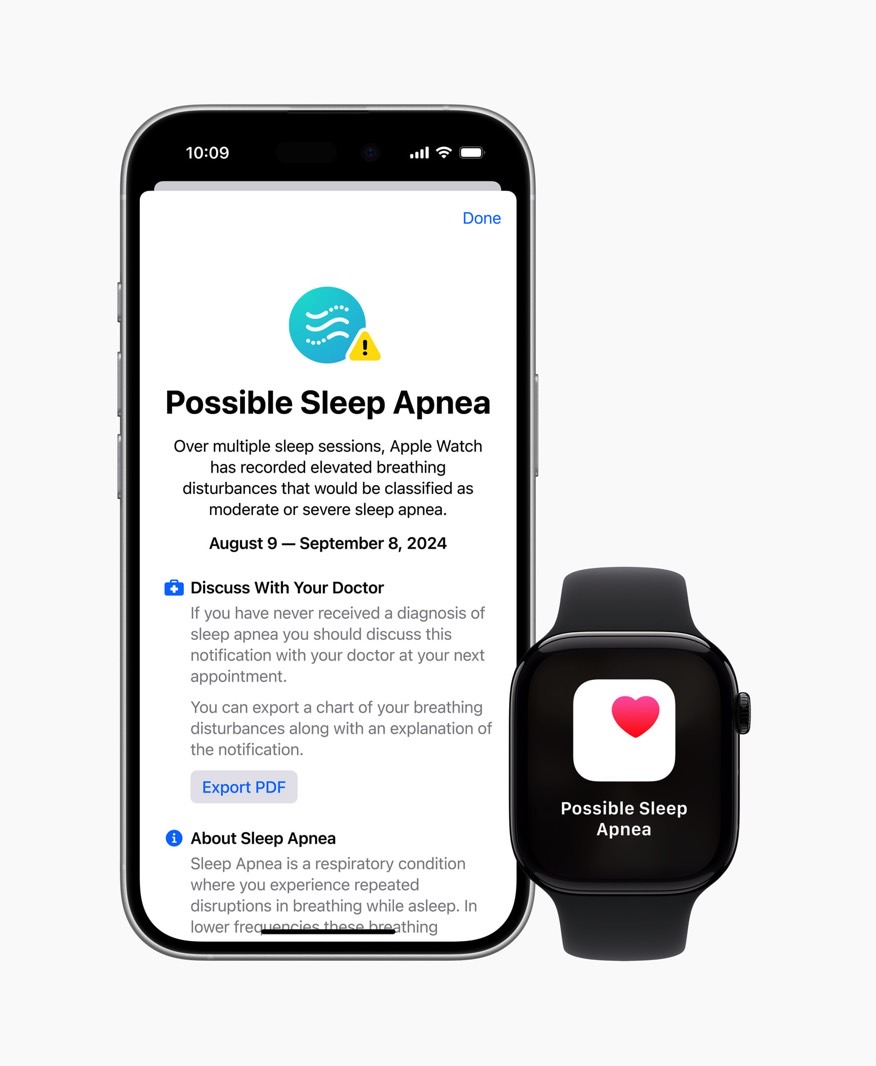Apple Watch Gets FDA Approval For Sleep Apnea Detection Ahead Of Series 10 Release
After getting FDA approval for hearing aid detection on AirPods Pro 2 last week, the US Food and Drug Administration gave Apple a green light (via TechCrunch) for sleep apnea detection Apple Watch Series 9, Apple Watch Series 10, and Apple Watch Ultra 2.
This feature has been announced during the iPhone 16 event. However, it's possible that Apple will require a software update to make these wearables compatible with sleep apnea detection.
Apple explained during the keynote that sleep apnea is a potentially serious condition where breathing stops repeatedly during sleep. "The condition, which is estimated to impact more than 1 billion people worldwide, goes undiagnosed in most cases. If left untreated, sleep apnea can have important consequences on health, including an increased risk of hypertension, Type 2 diabetes, and cardiac issues."
To detect sleep apnea, Apple Watch uses the accelerometer to monitor small movements at the wrist that are associated with interruptions in normal respiratory patterns, tracked by a new Apple Watch metric called Breathing Disturbances. While some of these disturbances are normal, they are important to track as they can be used to help understand restfulness of sleep and, when occurring frequently over multiple nights, may be associated with sleep apnea. Users can view their nightly Breathing Disturbances in the Health app, where they are classified as elevated or not elevated and can be viewed over a one-month, six-month, or one-year period.

The new sleep apnea algorithm analyzes breathing disturbance data, so Apple Watch can notify a user if the data indicates consistent signs of sleep apnea. The notification will include the time period when potential sleep apnea occurred and educational materials on the importance of seeking treatment. It will also include a PDF providing three months of breathing disturbance data, notification details, and additional information to reference during a conversation with a healthcare provider.
Apple says the sleep apnea notification algorithm was developed using advanced machine learning and an extensive data set of clinical-grade sleep apnea tests.
Apple says this feature will be available in more than 150 countries and regions this month, in addition to the US, as local governments have given Apple the green light to offer it on watches.
